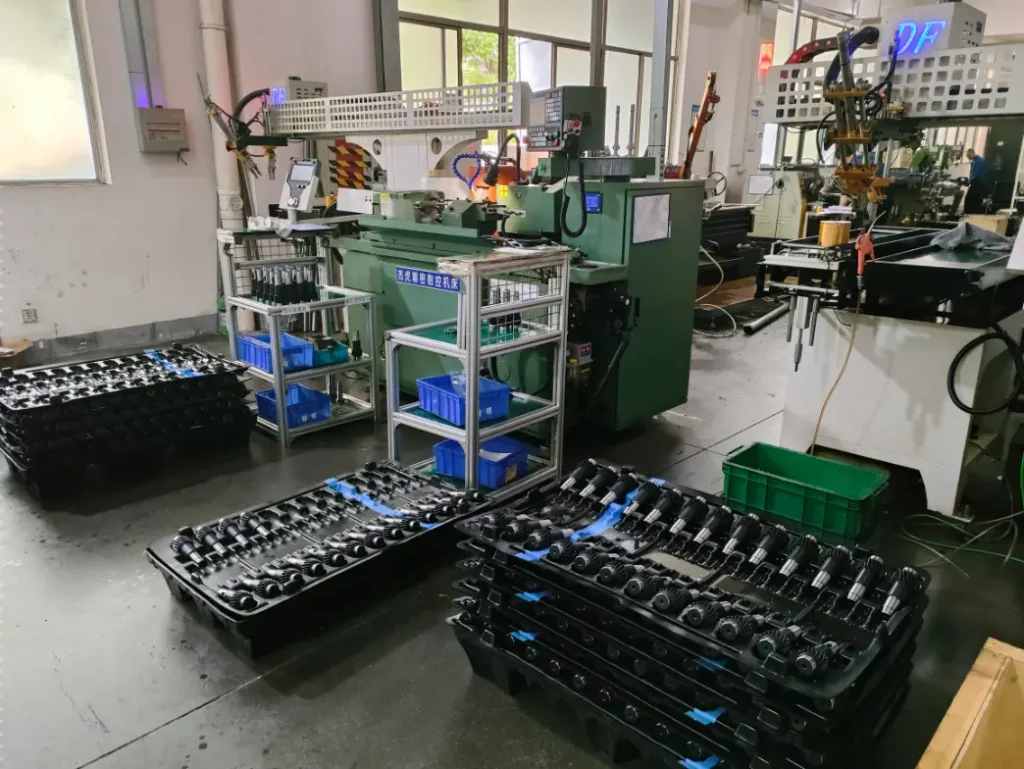The Ultimate Guide to Output Shaft Manufacturing
Introduction
In this article, we will dive deep into the intricate process of output shaft manufacturing. From understanding its function and components to exploring the various machining processes and heat treatment methods, this comprehensive guide will provide valuable insights into the world of output shaft production.
What is an Output Shaft?
An output shaft is a vital component in the gearbox of machinery, responsible for transmitting power from the gearbox to the wheels or other driven components. It plays a crucial role in converting the rotational motion of the gearbox into linear motion, thus enabling the machine to perform its intended functions.
Output Shaft Function
The primary function of an output shaft is to transfer the power generated by the gearbox to the rest of the machinery, allowing it to perform its designated tasks effectively. Understanding the intricate details of its function is essential for designing and manufacturing output shafts with precision and efficiency.
Output Shaft Components
To comprehend the manufacturing process, one must have a thorough understanding of the various components that make up an output shaft. From bearings to seals, each component plays a critical role in ensuring the proper functioning of the output shaft within the gearbox.
Output Shaft Manufacturing Process
The manufacturing process of an output shaft goes through several crucial stages, including machining, heat treatment, and assembly. Each stage requires meticulous attention to detail and precise execution to ensure the final product meets the necessary standards of quality and durability.
Output Shaft Machining
Machining is a foundational step in the manufacturing process, where the raw materials are shaped and formed into the desired output shaft components. This stage requires advanced machinery and skilled operators to achieve the precise dimensions and tolerances required for optimal performance.
Heat Treatment Methods
Heat treatment plays a pivotal role in enhancing the mechanical properties of the output shaft, such as strength and durability. By subjecting the shaft to controlled heating and cooling processes, manufacturers can tailor its properties to meet specific performance requirements, ensuring its longevity and reliability in operation.
Materials and Applications
The choice of materials used in output shaft manufacturing is critical to its performance and longevity. From alloy steel to carbon steel, each material offers unique characteristics that can be tailored to suit the demands of different applications, including automotive, industrial, and agricultural machinery.
Output Shaft Materials
Exploring the various materials commonly used in output shaft manufacturing, including their properties and suitability for diverse applications, allows manufacturers to make informed decisions in selecting the most appropriate material for a particular function.
Output Shaft Applications
The versatility of output shafts extends to a wide range of applications across various industries. Understanding the specific requirements of each application is vital for designing and manufacturing output shafts that meet the performance demands and operational conditions of different machinery.
Challenges and Solutions
Manufacturing output shafts comes with its own set of challenges, from precision machining to stringent quality control. However, by leveraging advanced technologies and innovative solutions, manufacturers can overcome these challenges and achieve superior results in output shaft production.
Output Shaft Problems
Identifying common issues and problems associated with output shafts enables manufacturers to develop proactive solutions and preventive measures, ultimately enhancing the overall performance and reliability of the machinery in which the output shaft is utilized.
Output Shaft vs Input Shaft
Understanding the key differences between output shafts and input shafts provides valuable insights into their respective roles and functionalities within the gearbox, shedding light on their unique design and manufacturing considerations.
Conclusion
In conclusion, the manufacturing of output shafts is a multifaceted process that requires a deep understanding of its function, components, materials, and applications. By embracing advanced technologies and a thorough knowledge of machining and heat treatment methods, manufacturers can produce output shafts that meet the highest standards of performance and durability.
FAQs (Frequently Asked Questions)
1. What are the primary components of an output shaft?
The primary components of an output shaft include bearings, seals, and various machined parts that contribute to its overall function and performance.
2. How does heat treatment enhance the properties of an output shaft?
Heat treatment modifies the microstructure of the output shaft, improving its strength, hardness, and wear resistance, ultimately extending its service life and reliability.
3. What are the common applications of output shafts?
Output shafts are commonly utilized in automotive transmissions, industrial machinery, agricultural equipment, and various other applications that require the transmission of power from the gearbox to driven components.
4. What are the key differences between output shafts and input shafts?
While both output shafts and input shafts play integral roles in the gearbox, their design and function differ, with input shafts receiving power from the engine and output shafts transmitting power to the driven components.
5. How does material selection impact the performance of an output shaft?
The choice of materials directly affects the mechanical properties and performance of an output shaft, influencing its strength, durability, and resistance to wear and fatigue in diverse operational conditions.

